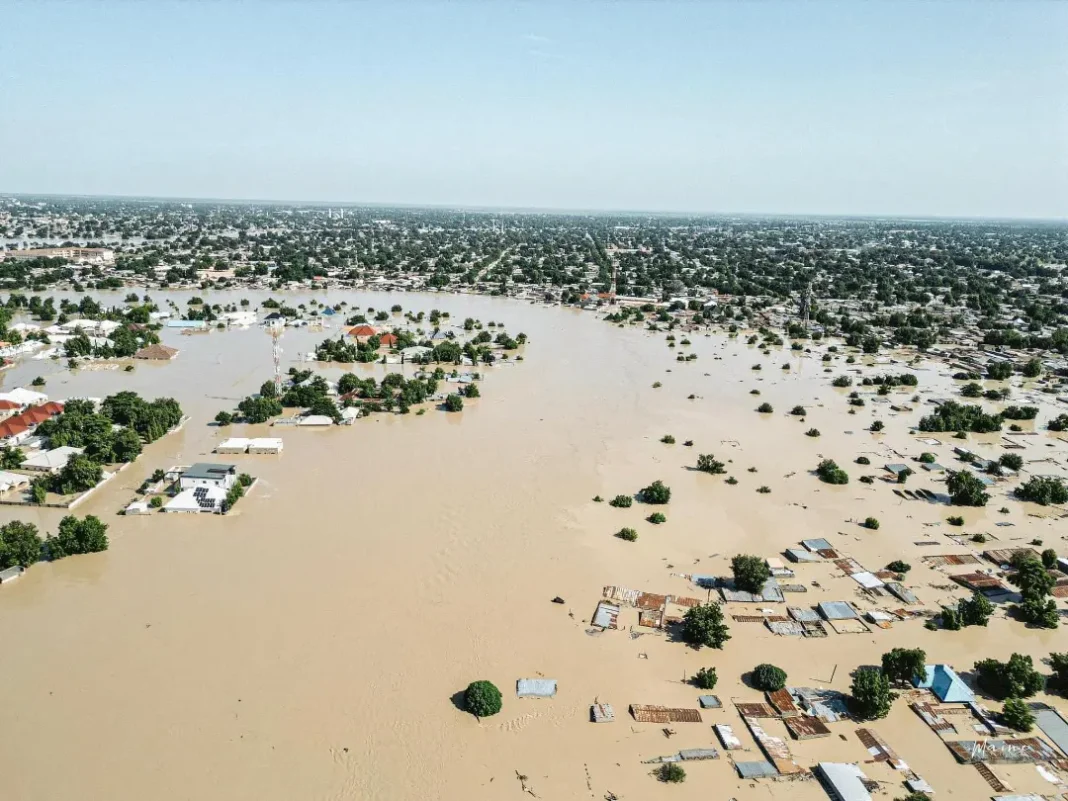The situation in Northern Nigeria paints a stark picture of climate vulnerability converging with institutional fragility. The combination of a record-breaking heatwave and looming flood risks is not just an environmental crisis—it’s a humanitarian and infrastructural challenge waiting to unfold if proactive measures aren’t taken urgently.
🔥 Heat Now, Floods Next: A Deadly Climate Loop
The 40°C heatwave sweeping across 18 northern states is already taking a toll on public health and productivity. But what’s especially concerning is that this extreme heat often precedes heavy rains—a dangerous setup for flash floods and dam overflows. We saw this play out in 2024, when the Alau Dam collapse in Borno resulted in over 150 deaths. That tragedy was both a wake-up call and a warning.
Now, with 30 states and the FCT flagged by NIHSA for flood risk in 2025, the window for preparation is closing fast.
🌊 Why This Keeps Happening
Environmental experts like Professor Aliyu Nabegu are right to call out the human factors behind these disasters. Poor drainage, blocked waterways, unregulated urban expansion, and deforestation are turning natural hazards into full-blown disasters.
His point about water always “finding a way for itself” is deeply true—nature is unforgiving when ignored.
On the heatwave front, deforestation is a major contributor. As forests are cleared—often for firewood or agriculture—the natural shade and moisture balance vanishes, creating urban heat islands and further destabilizing local climates.
🛠️ Policy Responses: Steps in the Right Direction
Federal initiatives like the:
- National Flood Insurance Programme (NFIP),
- Integrated Climate Resilience Innovation Project (I-CRIP), and
- Niger Flood Project
signal that climate resilience is on the radar. But as always, the gap between policy and execution remains a pressing concern.
Without strong local implementation—from LGAs building and maintaining drainage, to communities clearing waterways and planting trees—even the best federal plans may fall short.
🧩 The Bigger Picture: Climate Change & Northern Nigeria
What’s happening here isn’t isolated. It’s part of a global pattern where vulnerable regions, especially in the Global South, are hit hardest by climate change while having the least capacity to respond.
The northern part of Nigeria, already battling desertification and security issues, is at risk of becoming increasingly unlivable if these weather patterns persist without robust intervention.
⚠️ What Needs to Happen:
- Massive awareness campaigns in at-risk communities—flood alerts and heat warnings mean little if people don’t understand them or can’t act on them.
- Enforcement of urban planning laws—especially around drainage and construction in flood-prone areas.
- Tree-planting campaigns and fuel alternatives—to reduce both heat impacts and deforestation.
- Community-based early warning systems—leveraging radio, mobile, and local leaders to spread critical information.
- Continued investment in flood mitigation infrastructure, such as dredging rivers, reinforcing dams, and building sustainable housing.
This year will be a major test not only of Nigeria’s climate forecasting tools, but of its political will and community-level responsiveness. Whether that test ends in survival—or another avoidable tragedy—depends on action now, not later.
What’s your perspective—do you think the current interventions will be enough? Or does more pressure need to be placed on state and local governments to take the lead in protecting their communities?

